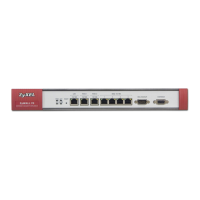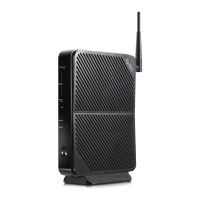Chapter 12 Wireless Screens
ZyWALL 5/35/70 Series User’s Guide
230
The figure below shows the possible wireless security levels on your ZyWALL.
Figure 129 ZyWALL Wireless Security Levels
If you do not enable any wireless security on your ZyWALL, your network is accessible to any
wireless networking device that is within range.
ESSID
ESSID (Extended Service Set IDentity) identifies the Service Set with which a wireless station
is associated. If you hide the ESSID, then the ZyWALL cannot be seen when a wireless client
scans for local APs. The trade-off for the extra security of “hiding” the ZyWALL may be
inconvenience for some valid WLAN clients.
MAC Address Filtering
This gives exclusive access to specific devices or excludes specific devices from accessing the
ZyWALL based on the device’s MAC address.
WEP Encryption
WEP (Wired Equivalent Privacy) as specified in the IEEE 802.11 standard provides methods
for both data encryption and wireless station authentication. WEP provides a mechanism for
encrypting data using encryption keys. Both the AP and the wireless stations must use the
same WEP key to encrypt and decrypt data. Your ZyWALL allows you to configure up to four
64-bit or 128-bit WEP keys, but only one key can be used at any one time.
IEEE 802.1x
The IEEE 802.1x standard outlines enhanced security methods for both the authentication of
wireless stations and encryption key management. Authentication can be done using the local
user database internal to the ZyWALL (authenticate up to 32 users) or an external RADIUS
server for an unlimited number of users.
To use 802.1x you need the following.
• A computer with an IEEE 802.11b wireless LAN card.
• A computer equipped with a web browser (with JavaScript enabled) and/or Telnet.
• A wireless station must be running IEEE 802.1x-compliant software. Currently, this is
offered in Windows XP.

